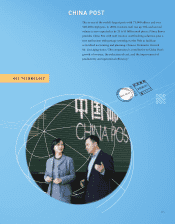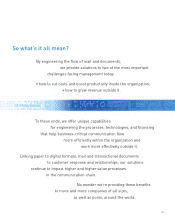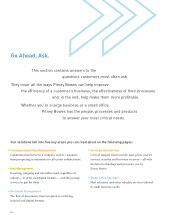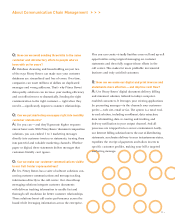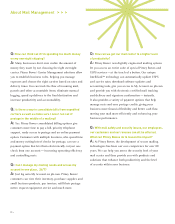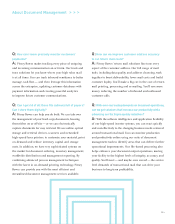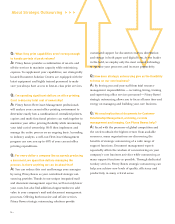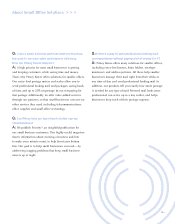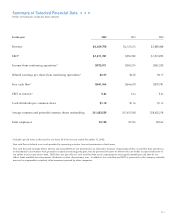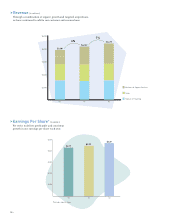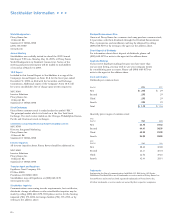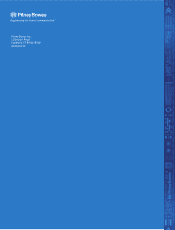Pitney Bowes 2002 Annual Report Download - page 28
Download and view the complete annual report
Please find page 28 of the 2002 Pitney Bowes annual report below. You can navigate through the pages in the report by either clicking on the pages listed below, or by using the keyword search tool below to find specific information within the annual report.
26 >
From a financial perspective, Pitney Bowes had a good
year in 2002. We grew our revenue base, we met our
earnings guidance during each quarter and for the year,
we generated substantial free cash flow, we increased our
dividend per share, and we took decisive financial
actions to position the company for long-term prosperity.
We met our objectives for revenue growth. In total, our
revenue grew this year by approximately $287 million,
which was a 7% increase over the prior year. Excluding
acquisitions, our revenue grew by about 1%, which was
below our long-term target of 4-6%, but represented an
achievement in an economic environment where many
companies registered year-over-year declines.
In line with our previous guidance, we achieved earnings
per share of $2.37, excluding “special items.” We ignore
special items (restructuring charges, extraordinary gains,
one-time write-offs, etc.) so that our investors can compare
our results on an “apples-to-apples” basis and monitor the
sustainable earnings power of our business. Computed
in this way, we achieved a 5% growth in our earnings per
share over the prior year and a compounded growth rate
of 10% over the past five years.
Of particular note, we exceeded our objective for
“free cash flow”, which we define to be cash flows from
operating activities less capital expenditures. We target
free cash flow to equal or exceed our net income for the
year. Excluding special items, free cash flow was about
119% of net income during 2002. This helped give us the
wherewithal to pay $282 million of dividends, repurchase
$300 million of stock, and make $127 million of accretive
acquisitions. We also made year-end contributions of $339
million to our pension funds in the U.S. and the U.K.
In January 2003, we increased our annual dividend per
share from $1.18 to $1.20. This represented the 21st year
of dividend growth.
At the same time, we took decisive actions in our Capital
Services business to reduce our exposure to commercial
passenger aircraft and to discontinue our future involvement
in long-term and structured financings. While these
actions resulted in a non-cash, pretax charge of $213
million and will reduce our earnings from these services
in the future, we believe that the company will be better
prepared for growth, with a greater degree of financial
flexibility to respond to alternative strategic opportunities.
We also built upon our reputation for forthright disclosure,
doing our utmost to reassure investors and employees
about the integrity of our reported results, the rigor of
our financial procedures, and the ethical standards of
our management team. We intend to remain a leader
in the area of corporate governance and take seriously
our responsibilities to provide candid and clear
financial disclosures.
Our goal is to enhance Pitney Bowes’ status as a financially
sound and richly rewarding long-term investment. To that
end, we have strategies in place to drive increased revenue
growth in our core business, lower our underlying cost
structure, reduce our exposure to non-core financial
assets, and make attractive investments that exceed our
cost of capital.
Bruce Nolop
Executive Vice President and
Chief Financial Officer
Financial Highlights from our CFO ∏ ∏ ∏



